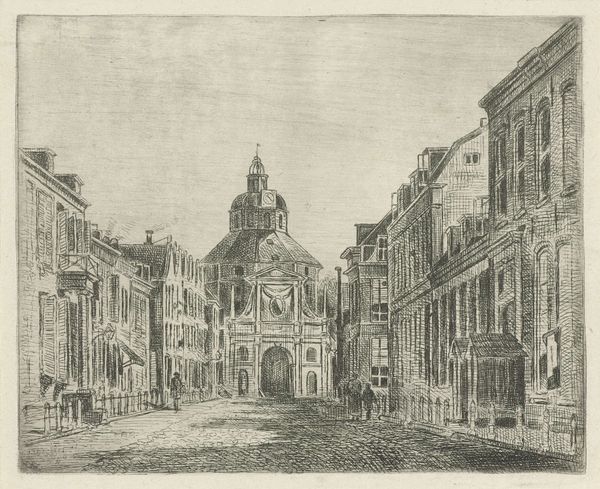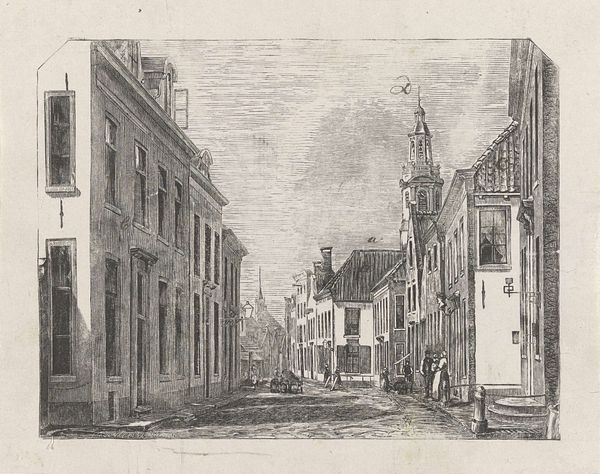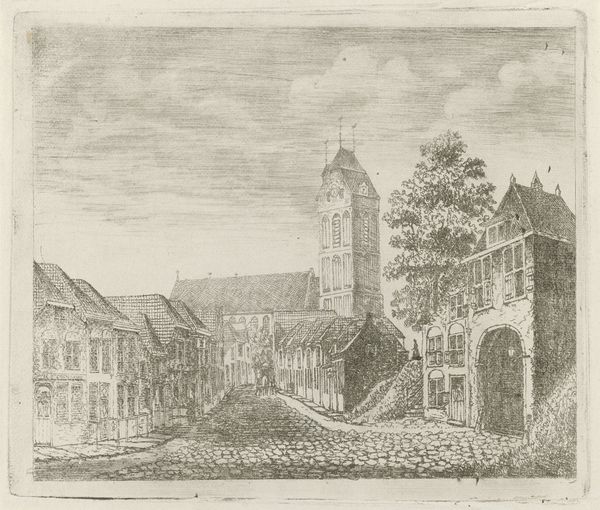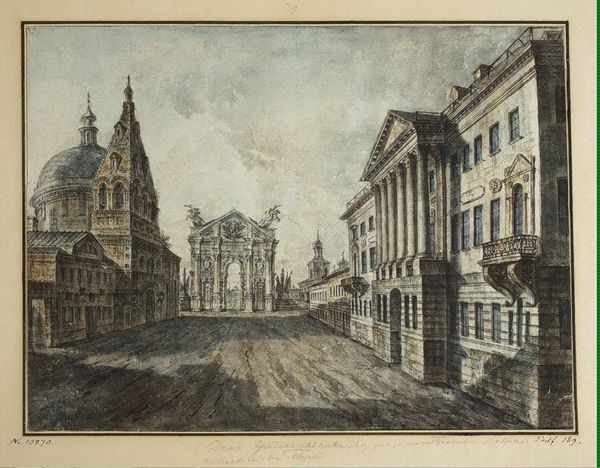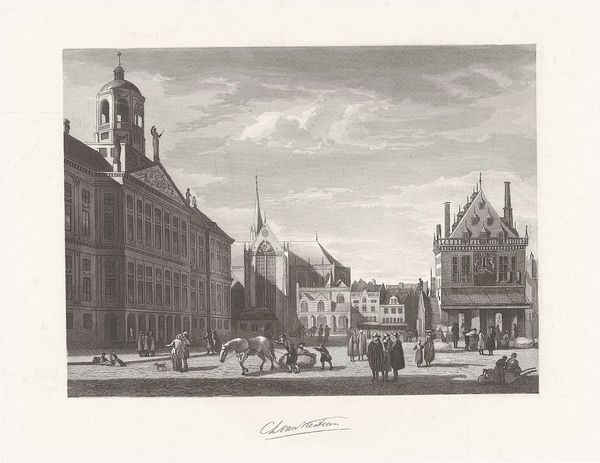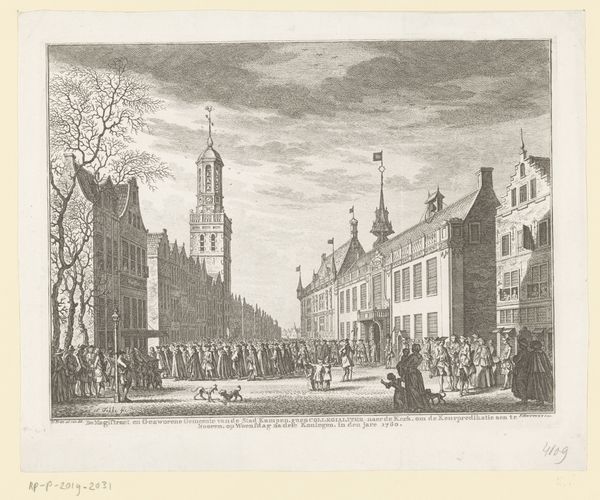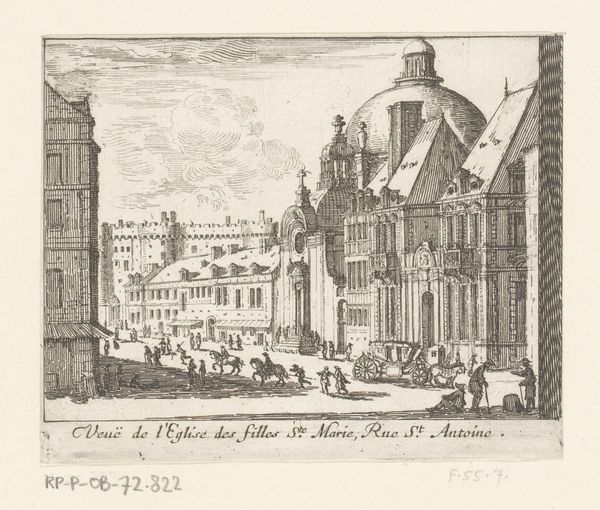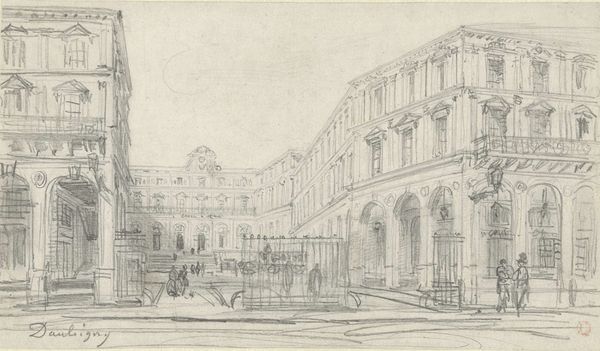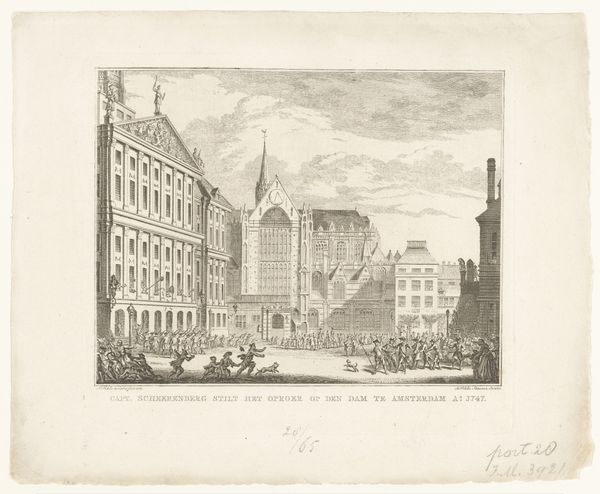
drawing, etching
#
drawing
#
etching
#
etching
#
cityscape
#
street
Dimensions: height 127 mm, width 155 mm
Copyright: Rijks Museum: Open Domain
Editor: This etching, “View of the Wittevrouwenpoort in Utrecht" by Jan van Lokhorst, presumably made sometime between 1847 and 1874, is just so… linear. What stands out to you? Curator: Indeed. Note the pronounced use of perspective. Van Lokhorst employed linear perspective to structure the composition, guiding the viewer's eye toward the vanishing point located within the Wittevrouwenpoort. The geometry dictates how we engage. Consider also the deliberate deployment of hatching and cross-hatching techniques, crucial to achieve tonal variation. How does the artist treat surface and texture? Editor: I see the different textures now, especially the rougher quality of the stone compared to the smoother surfaces of the buildings. So it’s all about how Lokhorst used line and texture? Curator: Precisely. Observe how light is constructed solely through line and density, devoid of color. Van Lokhorst uses line to carve form from the pictorial space, dividing the image with vertical planes, creating areas of positive and negative space to enhance its flatness. Without any historical insight, what can the lines, shades, textures, or space tell us on their own? Editor: It is an intriguing study in contrasts—between light and shadow, smooth and rough, architectural grandeur and human scale. Focusing on these intrinsic elements really reveals the artistry in what I initially saw as just a historical record. Curator: Indeed. Shifting away from what is represented, towards *how* it is represented opens new avenues for experiencing art.
Comments
No comments
Be the first to comment and join the conversation on the ultimate creative platform.
